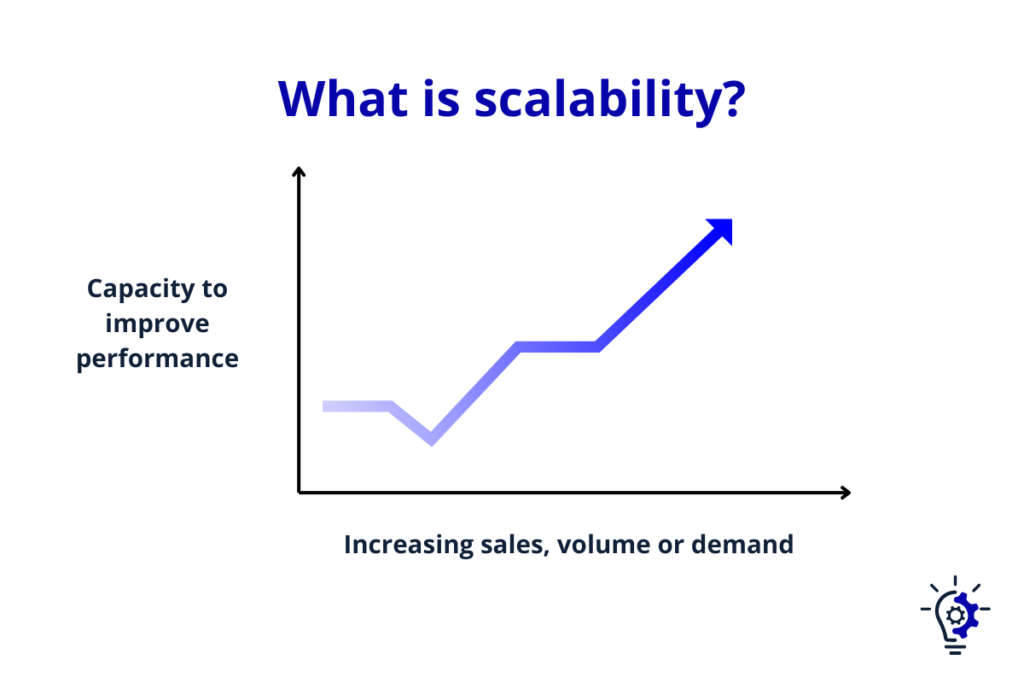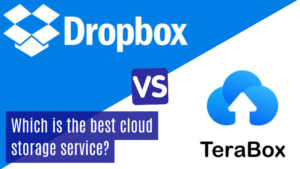If you want to store large amounts of data, you have come to the right place.
In this comprehensive guide you will learn how to store large amounts of data, the best solutions for big data sets and best practices to ensure the safety of your information.
Discover how you can choose the right way to store your big chunks of information next.
Table of Contents
Key Takeaways
- Use the “3-2-1” backup rule for secure data storage. This means creating three copies of your data, storing two on different media, and keeping one copy offsite or in the cloud.
- Choose between file-based systems, relational databases, object storage, and cloud storage based on your data type and needs. Each solution has its own benefits like quick access or efficient management for large-scale information.
- Prioritize scalability and security when selecting a data storage option to ensure it can grow with your needs and protect sensitive information from unauthorized access.
- Implement efficient data retrieval methods by organizing and indexing your stored content. This enables quick search results and better decision-making using your collected data.
- Regularly backing up your data prevents loss and keeps it accurate over time.

Understanding Big Data Storage
What is Big Data and why efficient storage matters? These are the different types of data storage solutions.
What is Big Data?
Big data refers to enormous volumes of data that standard processing tools cannot handle effectively. This can include a vast range of information from various sources like social media feeds, business transactions, and machine-to-machine communications.
With the growth of digital technology and the number of people using data storage, big data storage has become an essencial area for companies looking to leverage their datasets for better decision-making and improved business outcomes.
Efficient storage and management are the key when you’re dealing with large amounts of data. The introduction of technologies such as cloud storage and scalable storage solutions has made it easier than ever to keep big data secure yet accessible.
As businesses evolve, so too do the methods for storing, managing, and analyzing this wealth of information to ensure that it can be used cost-effectively and efficiently.
Storing large quantities of data is no longer a technological challenge but an opportunity for innovation.
Why do you need efficient storage for large amounts of data?
Efficient storage for large amounts of data is crucial to ensure that your data is safe and accessible. With the ever-increasing volume of data, efficient storage helps in managing the large memory required for storing vast quantities of information.
In addition to this, space-efficient techniques help in preserving data while also allowing it to be quickly retrieved when needed. Not only do efficient storage methods secure and protect your valuable data, but they also facilitate long-term preservation which is essential for maintaining the integrity and security of your collected information over time.
Ensuring efficient storage not only brings about cost savings but also underpins effective management of largescale data collection. It’s advisable to prioritize backup strategies that follow the “3-2-1” rule, safeguarding against potential loss or corruption of important data.
This can lead to better decision-making processes and ultimately improve outcomes by navigating complexities within big data management.
How To Store large amounts of data
When storing large amounts of data, you can choose from various solutions like file-based systems, relational databases, object storage, and cloud storage. Each solution offers different benefits and functionalities depending on your specific needs.
File-based storage systems
When storing large amounts of data, file-based storage systems are an efficient solution. They organize data into files and folders, making it simple to store and retrieve information in a structured manner.
Utilizing keywords for quick access improves the efficiency of organizing and managing large quantities of data.
File-based storage also allows for flexible backup options such as replication, snapshots, and versioning. These features ensure that your data is secure and easily recoverable in case of any unexpected events or loss.
By implementing file-based storage systems, you can efficiently manage your large-scale data while ensuring its security and accessibility.
Relational databases
Relational databases are structured systems for storing and managing data. They use tables to store information, with each table containing rows and columns. This allows for efficient retrieval of specific data points using SQL queries.
These databases ensure data integrity and consistency, making them suitable for transactional systems like e-commerce platforms and financial applications. By organizing data into related tables, relational databases offer flexibility in handling complex relationships between different datasets while maintaining ACID properties to ensure reliability and accuracy.
Relational databases play a crucial role in managing large amounts of structured data efficiently by enabling secure access, backup options, and scalability for business growth. When designed effectively, they can help businesses maintain accurate records, optimize performance through indexing techniques, and support the seamless integration of new datasets.

Object storage
Now, let’s delve into – Object storage. Object storage is an efficient way to store large amounts of unstructured data. It allows you to manage vast quantities of information without the limitations of a traditional file system.
With object storage, you can easily scale your storage capacity and ensure data integrity through built-in redundancy and fault tolerance mechanisms. This technique aligns with the need for space-efficient and secure data storage solutions, making it an ideal choice for handling large-scale data storage needs.
Cloud storage
Cloud storage is a cost-effective and scalable solution for storing large amounts of data. Utilizing cloud storage allows you to easily increase or decrease your storage capacity based on your needs, making it space efficient and flexible.
Data lakes, a form of cloud storage, are especially useful for businesses that need to store unstructured data like images, audio files, and video content in a way that supports fast analysis.
Efficiently managing large-scale data storage through cloud solutions ensures long-term data preservation. By following the “3-2-1″ rule for backups – creating three copies of your data with two stored on different media and one copy located offsite – you can improve the security and integrity of your large volumes of data.
It’s not only about storing the data but also ensuring its safety in order to make better decisions resulting in improved business outcomes.
Services like Terabox claim they offer 1 TB of cloud storage for free, but you should search more in depth those kinds of services.
If you to make applications and websites available on the internet using the cloud, the best option is to use cloud hosting services like Linode vs DigitalOcean.
Tips to store large amounts of Data Efficiently
Ensuring data backup is a priority in long-term storage options
Prioritize data backup
Data backup is essential for preserving the security and integrity of your large-scale data. Remember the “3-2-1” rule, which suggests having three copies of important data: your original data and two backups stored on different media, with one copy stored offsite or in the cloud.
Utilizing this strategy ensures that your data remains protected from potential loss or corruption, safeguarding your valuable information. By prioritizing data backup, you can avoid disruptions and confidently navigate the ever-changing realm of large-scale data storage.
Utilize long-term storage options
When it comes to storing large amounts of data for the long term, consider using data lakes and warehouse storage for unstructured and structured data, respectively. Data lakes are beneficial for their quick and cost-effective analysis of large volumes of diverse data.
Meanwhile, while warehouse storage is common, it still has its drawbacks due to scalability limitations. By following the 3-2-1 backup rule you can ensure a reliable long-term storage option that prioritizes data integrity.
Consider scalability and security to store large amounts of data
When it comes to storing large amounts of data, you need to consider scalability and security. Scalability ensures that your storage solution can grow with your data needs, while security is crucial for protecting sensitive information from unauthorized access.
Implementing scalable and secure storage solutions like cloud storage or object storage can help you efficiently manage and safeguard your large-scale data.

Efficient Data Retrieval
To retrieve data efficiently, ensure data organization and proper indexing. Use methods such as caching and prefetching for quicker retrieval.
Best Methods for data retrieval
When it comes to retrieving large amounts of data, there are several efficient methods you can use. Here’s a detailed list:
- Utilize indexing and search functions within your storage system to quickly locate specific data sets.
- Implement data warehousing techniques for organized and systematic retrieval of structured data.
- Employ data lakes for fast and cost-effective retrieval of unstructured data, enabling quick analysis and decision-making.
- Use cloud-based storage solutions with advanced querying capabilities for rapid and flexible data retrieval. Sync.com, Dropbox and pCloud are some examples.
- Leverage scalable object storage systems that allow you to access vast amounts of data without compromising speed or performance.
By incorporating these methods, you can streamline the process of retrieving large volumes of data efficiently, enhancing your overall data management strategy.
Importance of organization and indexing
Efficient data retrieval depends on organizing and indexing your large amounts of data. Proper organization ensures quick access to specific information, while effective indexing streamlines the search process for relevant data.
Without efficient organization and indexing, retrieving specific data from a large pool can be time-consuming and frustrating. Utilizing these methods allows you to retrieve the needed information promptly, enhancing your overall productivity in managing large volumes of data.
Furthermore, organized storage with clear indexing significantly improves decision-making processes using stored data. By effectively categorizing and indexing your data, you enable streamlined analysis and faster extraction of valuable insights when needed.
This approach maximizes the utility of your stored data by facilitating swift access to pertinent information for informed decision making, thus ensuring that you can harness the full potential of your stored resources for business growth and development.

Choosing the Right Data Storage Solution to Store large amounts of data
Evaluate your data storage needs to match specific requirements and ensure seamless scalability. Consider cost and ease of use when determining the ideal solution for your business.
Evaluating your data storage needs
Evaluate your current data volume and estimate future growth.
Consider the type and format of data you are dealing with, such as structured, unstructured, or semi-structured data.
Assess the speed at which data needs to be accessed and retrieved.
Analyze the security requirements for your data, including compliance regulations and privacy concerns.
Consider the scalability of storage solutions to accommodate future expansion.
Think about cost implications and budget constraints in relation to your data storage needs.
Understanding the importance of evaluating your data storage needs is crucial in making informed decisions about choosing the right storage solution that best fits your requirements.
Considering cost and ease of use
Choosing the right data storage solution requires a thoughtful balance between cost and ease of use. The table below simplifies this comparison to help guide your decision-making process.
| Data Storage Solution | Cost (Initial and Ongoing) | Ease of Use |
|---|---|---|
| File-based Storage Systems | Low initial cost, variable ongoing based on scale | Simple for smaller datasets, more complex as data grows |
| Relational Databases | Medium to high initial cost, maintenance cost | Requires expertise, but highly efficient for structured data |
| Object Storage | Low to medium initial cost, pay-as-you-go for cloud options | High scalability, user-friendly with API access |
| Cloud Storage | Variable, often with a pay-as-you-go model | Highly scalable, accessible from anywhere, requires management |
| Data Lakes | Medium to high, depending on infrastructure | Highly effective for unstructured data, requires specialized skills |
This comparison emphasizes the necessity of evaluating both initial and ongoing costs against how straightforward the system is to operate. While cloud storage offers flexibility and scalability, it also necessitates ongoing management.
On the other hand, file-based storage systems may start off as cost-effective and easy to use but can become cumbersome as your data grows. Similarly, while relational databases and data lakes provide robust solutions for structured and unstructured data respectively, they demand specific expertise to set up and maintain efficiently.
Object storage emerges as a user-friendly option to store large amounts of data, especially with its API access and scalability, fitting for those looking to manage large amounts of data without significant upfront investment. Prioritizing a solution that aligns with your team’s expertise and your project’s scale is crucial for managing and analyzing large volumes of data effectively.
Conclusion – How to Store large amounts of data
Congratulations! You’ve gained valuable insights into efficient ways to store large amounts of data. Now, you have the tools to understand big data and choose the right storage solution for your needs.
With these tips, you can ensure efficient data preservation and retrieval methods. Now you can store large amounts of data with safety and efficiency.

FAQs
1. What are efficient ways to store large amounts of data?
You can use various data storage techniques such as cloud storage, external hard drives, and network-attached storage systems for long-term data preservation.
2. How do I choose the right data storage method?
Look at your needs for accessing and retrieving the data. Different data storage and retrieval methods suit different situations. For quick access, you might prefer cloud services; for bulk, long-term preservation, external drives could be better.
3. Can I easily retrieve my stored data with these methods?
Yes! Each method has its own way to ensure easy retrieval of your information. Make sure to organize your files well and understand the retrieval process of your chosen technique.
4. Is it expensive to store large amounts of data efficiently?
The cost varies based on the method you choose for storing your data. Cloud services often have monthly fees but offer great accessibility, while buying external drives involves an upfront cost but no ongoing charges.





